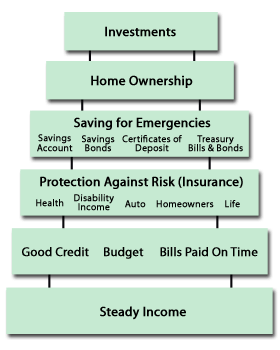
HOW TO START STOCK TRADING
Having 9.5 hours a day more of spare time (I am a new retiree), I am having fun with Quora.com where people all around the world are asking questions and getting answers from the people who have particular experience related to the questions. While many questions are repeated and sometimes stupid, there are some really good ones that encourage me to write the answers.
One of the most asked questions in the Investment category is: “HOW TO START INVESTING MONEY?”
To avoid the repetition and answer this question over and over, I have decided to write the article on how I see it, and how I have begun investing money.
Many beginners join the stock market to make their fortune. But after a short time, they leave the market suffering a huge loss. Because many investors can never make a profit they give up the investment in the market. Why does it happen? With many blunders in their decisions, they result in loss.
There are many reasons for which investors particularly beginners make blunders. The biggest mistake they make is that they get tempted to the cheap price of shares. They prefer the companies that have cheap share prices. The approach is: I can buy this stock cheap, so over time it will grow.
They do not check the fundamentals of the company in which they invest. They should check the fundamental points like Debt: Equity Ratio, Market Cap, and profit growth Margin, and Sales Growth margin, Return on Equity, etc., not to mention they ignore the stock charts.
 My point is: DO NOT begin investing in the market using just several tips (no matter from whom). Investing in the stock market is another skill. It is like being a dentist treating your tooth. If you do it incorrectly, you will hurt yourself badly. The best approach is to learn the trade and start with the so-called "paper-trading" that is offered by the majority of brokerage firms. That way you will be able to see if your assumption about a particular investment is right or wrong without actually investing a penny. I remember my own desire to begin trading and see how it goes. I have to be honest: it's gone badly.
My point is: DO NOT begin investing in the market using just several tips (no matter from whom). Investing in the stock market is another skill. It is like being a dentist treating your tooth. If you do it incorrectly, you will hurt yourself badly. The best approach is to learn the trade and start with the so-called "paper-trading" that is offered by the majority of brokerage firms. That way you will be able to see if your assumption about a particular investment is right or wrong without actually investing a penny. I remember my own desire to begin trading and see how it goes. I have to be honest: it's gone badly.
So, let’s start from the beginning and if you truly want to learn to trade, follow my thoughts and be patient!
WHAT ARE THE COMPONENTS YOU SHOULD HAVE OR LEARN FOR SUCCESSFUL INVESTING?
1. Cash to invest
-
- The first question is “how much do I need to start trading?” Well, let’s say you have $1,000 to invest. The average return on investment over time (If to invest to S&P 500 index) is deviating around 10%. So, your return will be about $100 a year.
- Will you be satisfied? I bet, no. One hundred dollar profit won’t make any significant difference in your budget, not to mention, you still have to pay the tax on your profit. So, to get a more substantial return on investment, you may want to start with $15,000-$20,000. Then, your return on investment would be between $1,500 and $2,000 a year. That is something noteworthy, right?
- Before deciding to invest in the stock market, make sure that all your other bases are covered. I mean, an emergency fund, insurances (like healthcare and car insurance), credit cards dues, etc. See the picture below.

(source: Illinois.edu)
2. Investment Plan
-
- Where do you want to invest? Stocks? Mutual funds? ETFs? Bonds? Real Estate? Here is my question to you: what do you know about them? How deep you do understand each investment type? Don't invest even one dollar if you don't understand the investment itself and how it would make you money.
- How much are you willing to risk? When you learn how to trade stocks, one thing you need to keep in mind is a risk. The amount of money you’re willing to lose on a trade should be in line with the number of shares you decide to trade. Often, novice traders will jump into a trade with no real concept of how much they are willing to risk. Instead, they are only focused on one thing – how much they are going to make. Once they see the trade starts moving against them, they get emotional and turn a bad trade into something worse.
- Despite general talk among investors about avoiding losses, the simple truth is this: If you want to grow your wealth, you have to take a risk. It’s unavoidable. Every investment involves risk – the only questions are how much and under what circumstances. Remember, success is not about how much money you can make, but about how much money you keep. So, the true secret of wealth-building is taking risks properly.

- Know your exit points: A good trading plan has a target for profits and one of the trades is wrong. Always have two exit points.
- Risk vs. Reward: If you’re risking $0.75 on a trade then you better be making more than $0.75 on the upside. Try to twist trades where the risk/reward is shifted in your favor. If you are not sure, then it’s better to avoid the trade and wait for a better setup.
- Your investment plan should contain several bullets that define the goal of your investments: income or growth, long-term or swing trading, IRA vs. Roth IRA, and the real estate (if any) – buying for income or flipping the properties.
- Take the time to define who you are as a trader and what methods you’ll use to generate revenue. You only need one or two methods to be profitable. It’s better to be great at a couple of things than it is to be average at 10 trading methods. Successful millionaire traders are doing something different. They are specialists in their respective disciplines. Find a trading style that fits your personality and then work on developing it
- Combine your plan with Investment Strategies.
- A solid trading plan requires organization. If you want to learn how to trade stocks and be successful at them, you need to develop a plan. Figure out your strengths and weaknesses then develop what’s working and avoid whatever isn’t.
- Constantly review your trades and your process and make adjustments according to how the markets are trading. Once you see that you’re on the right path, your goal should shift to trying to get bigger in your best trades. Be patient and stick to your plan.
3. Investment Strategies
-
- This is not a simple topic. After you have identified the area of investment where you will be concentrating on, the next question would be about the strategies to invest in. You will have to be familiar with several approaches to trading.
- For instance, there is a strategy called CANSLIM created by W. O’Neil (see investors.com) that is based on knowledge of stock charting and 20 trading rules. This strategy has outperformed all others known until today.
- There are many others, also effective. For instance, if you want a no-worry long-term investment, you can use the “Gone Fishing Portfolio” created by Alexander Green (I admire his wisdom). Buy his book. I highly recommend it. The portfolio is a combination of index funds with low fees in a certain proportion that requires re-balancing once a year.
- You will need to read about different strategies that could be found in books, magazines, online articles, webcasts, and newsletters. But be careful with newsletters. Read here why. Extract only the information about strategies but not the actual trade recommendations.
4. Assets Allocation
-
- I have heard many times that your result in investing money will more depend on assets allocations than on how you do trade. Proper allocation of your investment capital is a single base for long-term success.
- If you over-concentrate your funds into one or two areas only, while they might be performing well today, tomorrow could be a different picture. Suddenly, your stocks are out of favor. Therefore, learn about how to allocate your investments in various categories and industries, so you won’t put “all eggs in one basket”, and while one industry performs badly, another one (at the same time) might be performing better. It will flatten the curve of your investments’ ups and downs and will help avoid big losses.
5. Investment Rules
-
- I have been preaching about investment rules in many instances. No matter what strategy you choose for trading, if you won’t follow your investment rules religiously, you will lose money (as I did while I was a novice investor).

- As a novice investor, you don’t know any rules maybe except the only one that you might hear already: “Protect your principal” or “Don’t lose”. It is a Warren Buffet rule #1. And his rule #2: “Follow rule #1”. How do you develop the investing rules? Only by learning!
- Can you identify where you see an advantage in the opportunity? For example, let’s say you are an event-driven trader and your focus is on trading stocks that have news. Or you might be trading on chart patterns, price range (like for preferred stocks), increase in dividends, etc.
- BEFORE ANY INVESTMENT IS MADE, you should learn a lot if you don’t want to lose your money. I recommend creating the file where you will drop the bits of information about various topics. In my file, I have the following:
- I have been preaching about investment rules in many instances. No matter what strategy you choose for trading, if you won’t follow your investment rules religiously, you will lose money (as I did while I was a novice investor).
-
-
- HARDCORE RULES
- TAX CONSIDERATIONS
- PARAMETERS FOR STOCKS
- BUYING RULES (CANSLIM)
- CHARTING TIPS
- CLOSED-END FUNDS (CEF)
- PREFERRED STOCKS
- RETIREMENT INVESTING
- LAZY PORTFOLIOS SETUPS
- SHORT SELLING RULES AND INVERSE ETFs
- REITs AND MLPs
- BDCs
- OPTIONS TRADING TIPS
- GENERAL INVESTING TIPS
-
Subscribe to our Club for FREE, and I will send you my file to use and improve.
Those bits of information will be the basis for your investment rules. You will need to define:
- When to buy the stocks (based on the chart, volume, the latest news, or any other parameters)
- When to sell the stocks to take the profits or cut losses.
- What market or stock conditions will trigger the trades?
- When to add to positions or when to trim them?
- What is your approach to dividend stocks with dividends above 6%? Will you apply those rules to them or the rules will be different?
- How would you choose the mutual funds and what would be your rules to keep or to sell them if the market has changed in an undesirable direction?
5. Remember, your trading rules MUST be written and kept in a place where you can easily read them. I have modified my rules several times based on my past mistakes and some tips from investment professionals. I did not apply them blindly but tested them first. You can read about some of my rules in another article.
6. YOU NEED TO LEARN DAILY!
-
- Believe it or not, this is the MOST important thing that can make or break your budget over time. Learning how to trade stocks is similar to learning a new profession, so, approach it very seriously.

- I have more than 20 years of trading experience but I am still learning daily and dropping useful tidbits of information into my investment folder. When I have begun to trade, I was a dreadful investor, and I have lost quite a bit during the 2008 downturn (see my article). Over time, and especially after my heartbreaking loss, I have made giant steps in my approach to investing.
- For your benefit, I am sharing the plan I have developed to mentor one of my former students who expressed his desire to learn from me but this time it is not about computer networking and cyber security but rather about investing money. Let me know if you find this plan useful.
- Believe it or not, this is the MOST important thing that can make or break your budget over time. Learning how to trade stocks is similar to learning a new profession, so, approach it very seriously.
LEARNING INVESTMENTS PLAN
Resources: https://www.investopedia.com/dictionary/ (see the top menu)
Note: for all items not shown in italic – just get a general understanding. All others: get in-depth.
- Learn the difference among investments (like Mutual funds vs. ETFs, etc.)
Categories of Investments:
-
- Pure stocks (companies) and their size (small, micro, mid, large, giant)
- ETFs (Pros and Cons)
- Mutual Funds (no-load, front-load, low fees, etc.)
- CEFs (Pros and Cons)
- Corporate Bonds
- Government Bonds
- Foreign Bonds
- Precious Metals
- Special Investments (including Real Estate, Liens, private investments, fixed and variable annuities, Structural Notes, CDs, etc.)
- Learn other categories and investment differences
-
- Sectors and Industries (see the Finviz.com screener here).
- Market Indexes (including Foreign) -which ones make sense to monitor? Include the Indexes of sectors.
- Dividends and Yields (including the tax advantages/disadvantages)
- Real Estate Trusts (REITs) and Mortgage Real Estate Trusts (mREITs)
- Limited Partnerships (LPs and MLPs)
- Currencies (Forex) trading (just general understanding)
- Cryptocurrencies (just general understanding)
- Futures trading (just general understanding)
- Options Trading (just general understanding at this stage)
3. Learn Charting
-
- Charting Basics (trends, charting methods, commonly used timing, etc.)
- Charting formations
- Price patterns and trendlines. Buy and Sell zones.
- Charting Indicators
- The importance of volume
- The combination of the best charting indicators
4. Learn Technical Analysis (buy the book)
-
- Three branches of Technical Analysis
- Financial markets and business cycle
- Three trends
- Valuation parameters
- Collecting basic data on stocks
- The importance of charts
- Evaluating dividend stock
- Evaluating CEF, ETF, Mutual Fund, or Bond
- Comparison is a key
- Technical Analysis tools and resources
5. CANSLIM method (investors.com)
6. Building a portfolio
-
- Long-term investments
- Dividend-generating investments
- Short-term trading
- Day Trading
- Retirement Portfolio and the investment horizon
- The importance of diversification, and how to diversify properly
7. Trading Technique
-
- Momentum or swing trading technique using charts
- How to choose the investments for a long-term holding
- Mutual funds
- Large Cap stocks
- Dividend-generating investments (stocks, ETFs, CEFs)
- Preferred shares
- Bond funds
- Inverse leveraged funds and indexes
- Averaging down and positioning
8. How to Monitor the Market
-
- What affects the stock market?
- Market indicators and group rotation.
- Practical identification of cycles
- IBD (confirmed uptrend, uptrend under pressure, downtrend) -(investors.com)
- What to do when the market changes direction?
9. How to work with investment brokers online
-
- How to choose the right broker and how to open an account
- What are the tools to use to monitor your account?
- Placing a trade and trade types
10. Financial Advisers (pros and cons)
11. Investment Resources and Web Sites
-
- The best online resources to monitor the portfolio and investments
- Mobile applications for trading, alerts, and news
Despite a lot of bullets in the plan above, it is not the comprehensive one, and I may add some important topics to learn.
I am planning to go step-by-step and publish the articles related to the learning plan described above. So, if you like this one, become a Club member for FREE. Sign on to this page, and you will be notified about new posts.
DISCLAIMER.
This site is for informational and educational purposes only and should not be construed to constitute professional advice. Nothing contained herein shall constitute a solicitation or endorsement. I am not affiliated with, nor do receive compensation from, any company. My apologies for any spelling mistakes (although, I have used the spell checker) or my writing style if it is not up to your taste. I am going to use my numerous notes from various articles, and if I did not specify the source, my kudos to all those authors whose thoughts I have added on the pages.
